
If you want to stir up drama in an online gardening forum, simply ask, “Can you plant peppers deeply like tomatoes?” Then make some popcorn, sit back and watch the sparks fly.
“No. If you bury them deeper than the pot they were in, the stems will rot, and the peppers will die.”
“Oh please, that’s nonsense; I’ve been burying my tomatoes and peppers up to the top leaves since 1972!”
“Yeah, I tried it once; all my peppers died. Don’t do it.”
“Aren’t peppers and tomatoes in the same family? I mean, you would think they would grow the same way, right?”
“What’s a pepper? Is that a new breed? Isn’t this the backyard chicken forum?”
“My grandmother always planted her peppers that way. She always had peppers growing in the garden when I was a kid, so it must work.”
“You can try it, but you’ll be buying peppers from the grocery store this summer.”
You get the idea.
It’s one of those gardening questions that’s hard to get a straight answer to. Until now. But first, let’s answer the backyard chicken poster’s question.
What Is a Pepper?
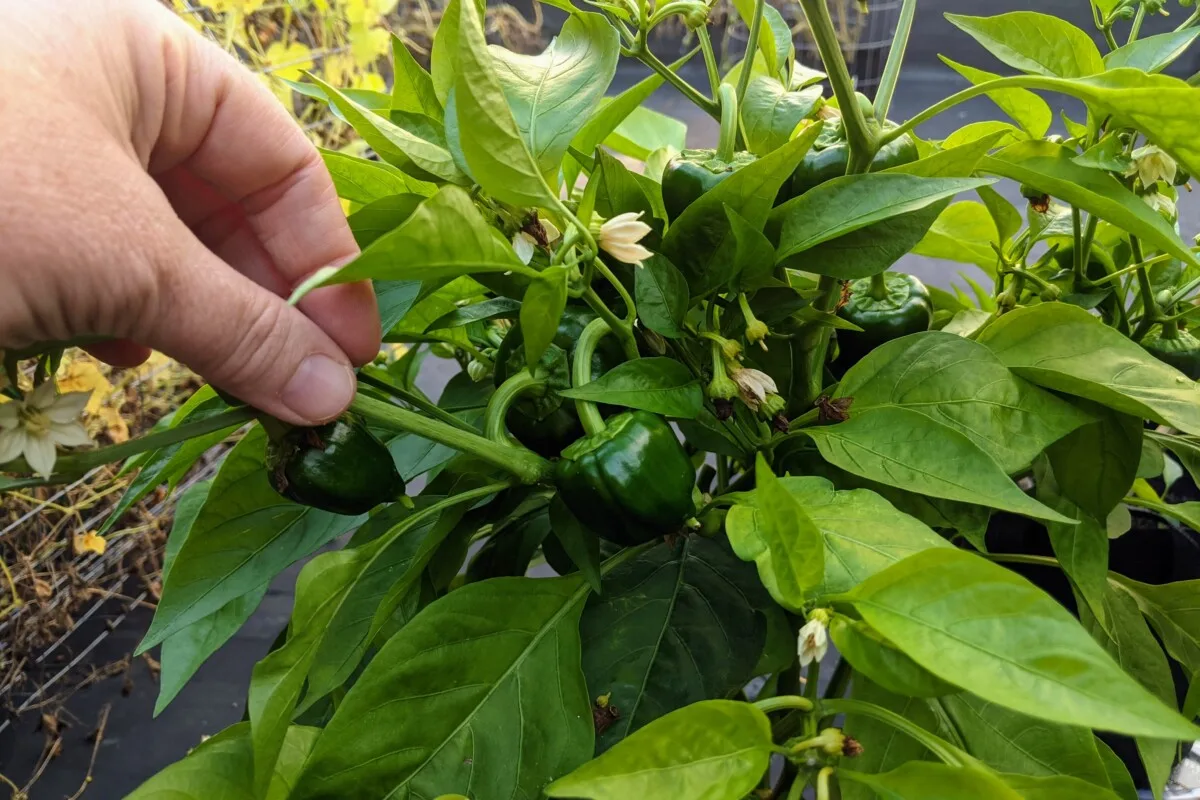
The pepper you enjoy today, be it sweet or melt-your-face-off-hot, started in Central and South America. Peppers are members of the Solanaceous, or nightshade, family. And yes, they are related to tomatoes, potatoes, eggplants, okra and even tobacco. Although, most of us don’t grow tobacco in our gardens.
Peppers all hang out in the genus Capsicum. The root of the word comes from the Greek, ‘kapto,’ which means ‘to bite.’ In this case, it’s the pepper, rather than you, doing the biting, as there was a time in the not-so-distant past when all peppers were hot peppers.
That sweet, mild bell pepper in the crisper drawer of your fridge isn’t found in nature.
The Spanish brought peppers back with them to Spain from Central America, where they dubbed them peppers. They likened their spicy taste to the black peppercorn (no relation), hence the name. Terribly original, I know.
From Spain, these spicy nightshades made their way across Europe and Asia. And it was only in the early 20th century that the Hungarians began to breed a milder pepper, Capsicum annum – a pepper that doesn’t contain capsaicin.
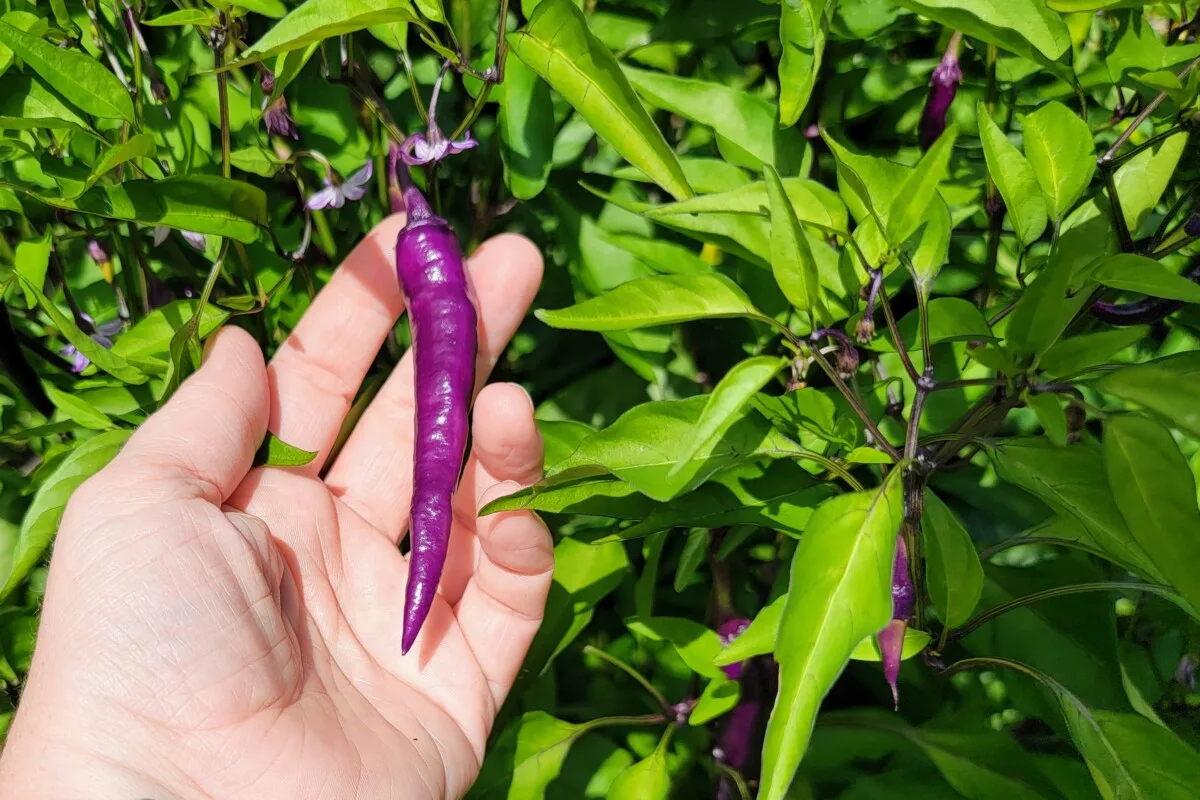
Unless you are a hot pepper aficionado, you probably grow peppers from the Capsicum annuum species. And if you’ve been gardening for any length of time, you’ve probably wondered if you could bury your pepper plants the same way it’s advised to bury tomato plants.
Despite all the arguing in gardening forums, the fact remains that pepper plants, like most solanaceous plants, produce adventitious root growth. So, yes, they can be buried deeper in the ground when transplanting, much like their tomato cousins.
Tomatoes are masters at taking advantage of adventitious root growth. If you get a hot, dry spell, you will see lots of tiny worm-like roots growing from the stem to help take in moisture from the air. And if you’ve neglected to prune your tomatoes, you will find that they’ve taken root wherever the stem makes contact with the soil.
Peppers are more selective in how and where they put out adventitious root growth.
So, yeah, if you poke them deeply in the ground without much thought, there’s a good chance you’ll end up with dead pepper plants. But as you’ve heard me mention a million times before, knowing more about how your plants grow in the wild will help you grow them better where you live.
Let’s take a look at the secrets to deep-pepper planting success.
Some Like It Hot
While not everyone enjoys a spicy chili, all pepper plants prefer temperatures that mimic their native origins. Remember, they come from Central and South America, where they grow in hot, moist tropical conditions. Unsurprisingly, hot peppers like even warmer temps than their milder, manmade counterparts.
If you’ve grown pepper plants from seed, you already know they need very warm soil, between 75-85 degrees, to germinate. But the pepper temperature connection doesn’t stop there.
Cooler soil and air temperatures can stunt the growth of pepper plants. You end up with weird-shaped peppers or little to no fruit, as the plant will cast-off developing flowers and fruit if it’s not warm enough. Peppers are more likely to succumb to disease in cooler temps, too.
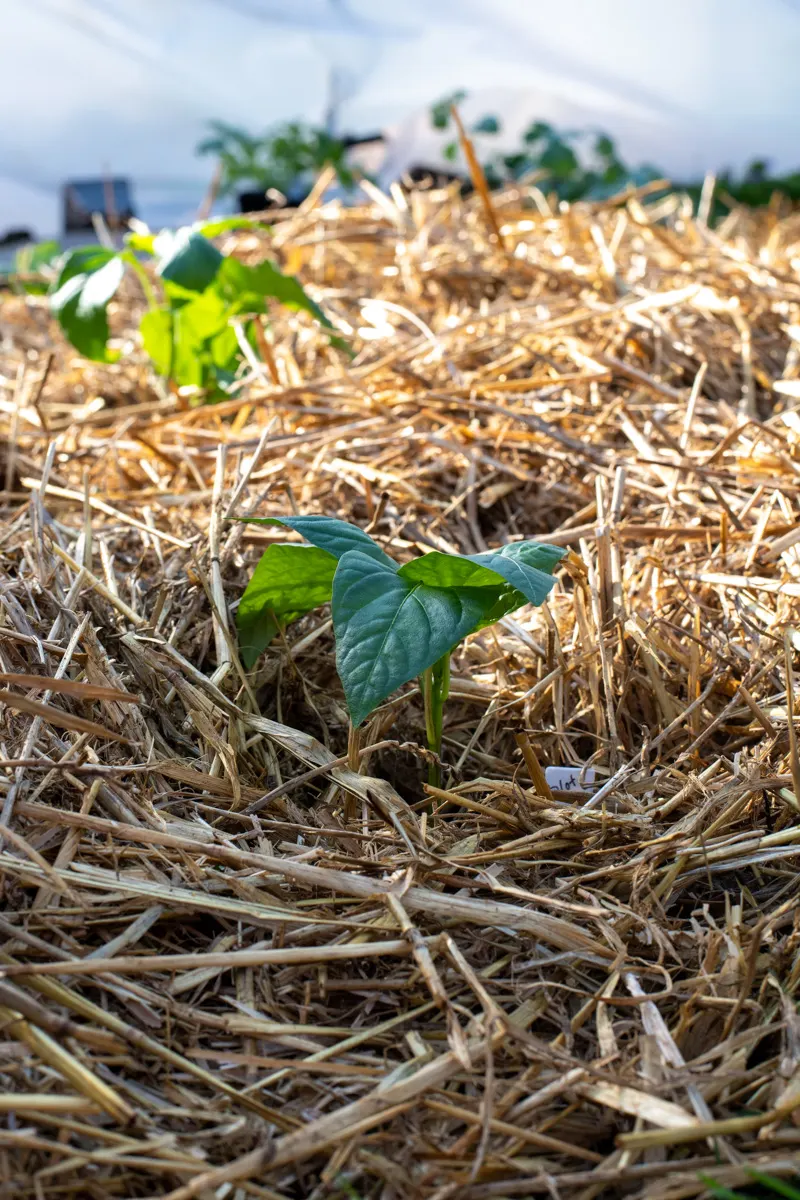
If you plan on burying pepper plants to encourage root growth along the stem, you have to have warm soil first. It’s an absolute must. Planting peppers deeply before the soil has adequately warmed is a recipe for dead plants. (Ask me how I know.) Peppers can’t tolerate the cool temperatures of early spring.
For this method to work, wait until soil temperatures are consistently 60 degrees F (15 C) and daytime temps are 65 degrees F and above. Soil temperature is a more reliable gauge of when to transplant most seedlings, so it makes sense to have a soil thermometer on hand.
Do You Know Your Soil Composition?
Think about the soil found in a pepper’s native environment, the Amazon basin. It’s rich and loamy, filled with decaying organic matter. It’s the perfect combination of nutrients and well-draining but moisture-retaining materials.
Now think about your garden.
Don’t worry; I’m wincing too. For most of us, the soil in our home gardens is a far cry from the mineral-rich soil in a tropical environment.
Peppers like constant moisture, but they don’t like being soggy. If you try to bury pepper plants in too wet soil, then yes, the stem will rot, and the plant will die. By the same token, burying pepper plants in soil that is too dry won’t give us the desired effect – new root growth along the stem.
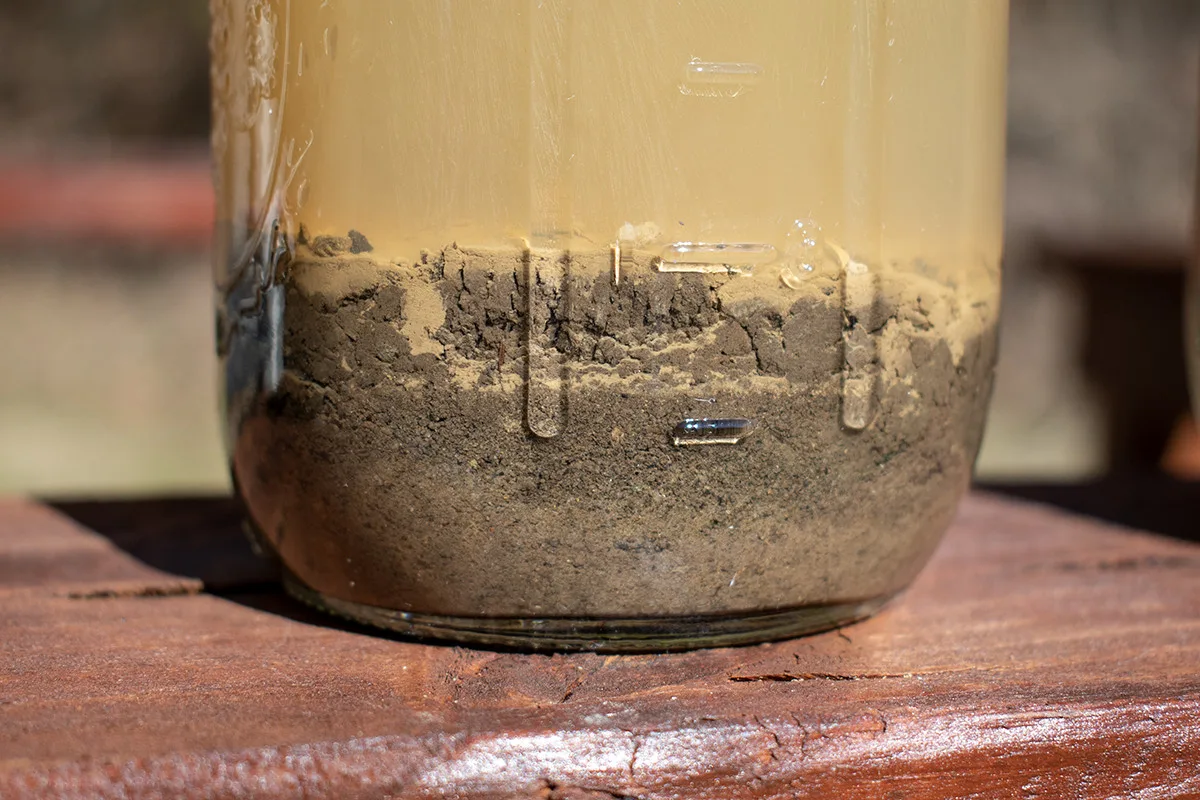
One of the best things you can do for your pepper plants and garden soil is a sediment test. This easy test only requires a mason jar, water and soil sample. You’ll end up with a better idea of the composition of your soil, making it easier to add the appropriate amendments needed to achieve the loamy soil mixture peppers love.
Peppers Are Not Tomatoes
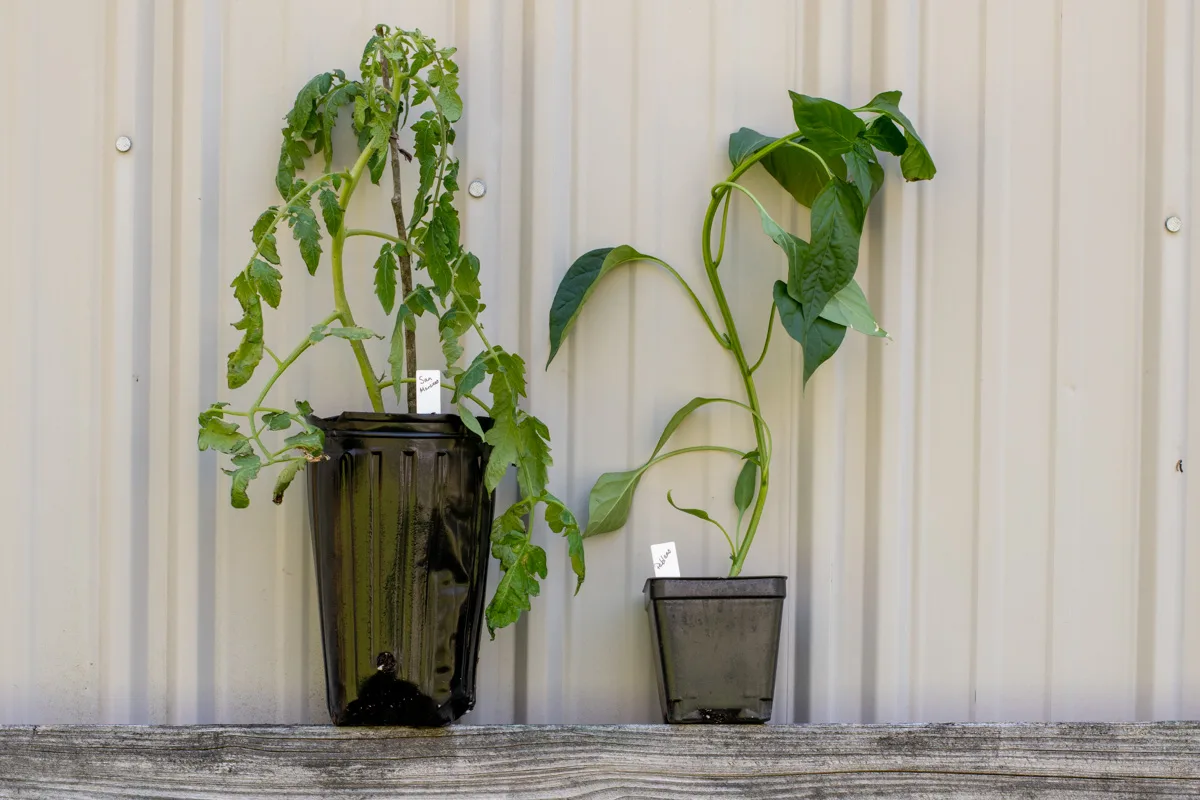
Well, yeah, Tracey. I figured that one out myself.
But the problem is too many of us treat peppers like tomatoes when we decide to bury them. Then we get frustrated when our pepper plants die and write the whole thing off, saying it can’t be done.
Let’s talk about tomatoes for a moment. I am convinced that if you say “adventitious roots” near a tomato plant, it will start growing them. Tomatoes are vining plants; in the wild, they put out adventitious roots anywhere they touch the soil.
The dermal layer of their stems is thinner than peppers, making it easier for new roots to grow quickly.
Peppers are not vining plants, so they put out adventitious root growth much slower and in more specific areas. Can they grow roots from their stems? Yes. But because of the thick dermal layer on their stems, it takes more time. As we discussed above, rot will win the race if the soil is too wet while those slow new roots are developing.
With tomatoes, you can bury stems, leaves and all. But peppers do better if you trim off extra stems first, so you’re burying a single central stem. By cutting off extra stems and leaves, the plant will create new growth, specifically at those leaf node sites. And because they are now underground, that new growth will be roots.
Pepper Plants Need More Time Hardening Off
Moving tender seedlings from their protected environment indoors straight to the garden usually ends up with disastrous results. You should always harden off seedlings before planting them in the garden, but it’s especially important for pepper plants.
Usually, a week is enough time to harden off most seedlings, but for pepper plants, you want to give them 10-21 days of acclimating to outside conditions before planting them. This extra time allows the plant to create and store more sugars before planting. Those stored carbohydrates aid in quicker root growth and speedier recovery from transplant shock.
Do Pepper Plants Benefit from Being Buried?
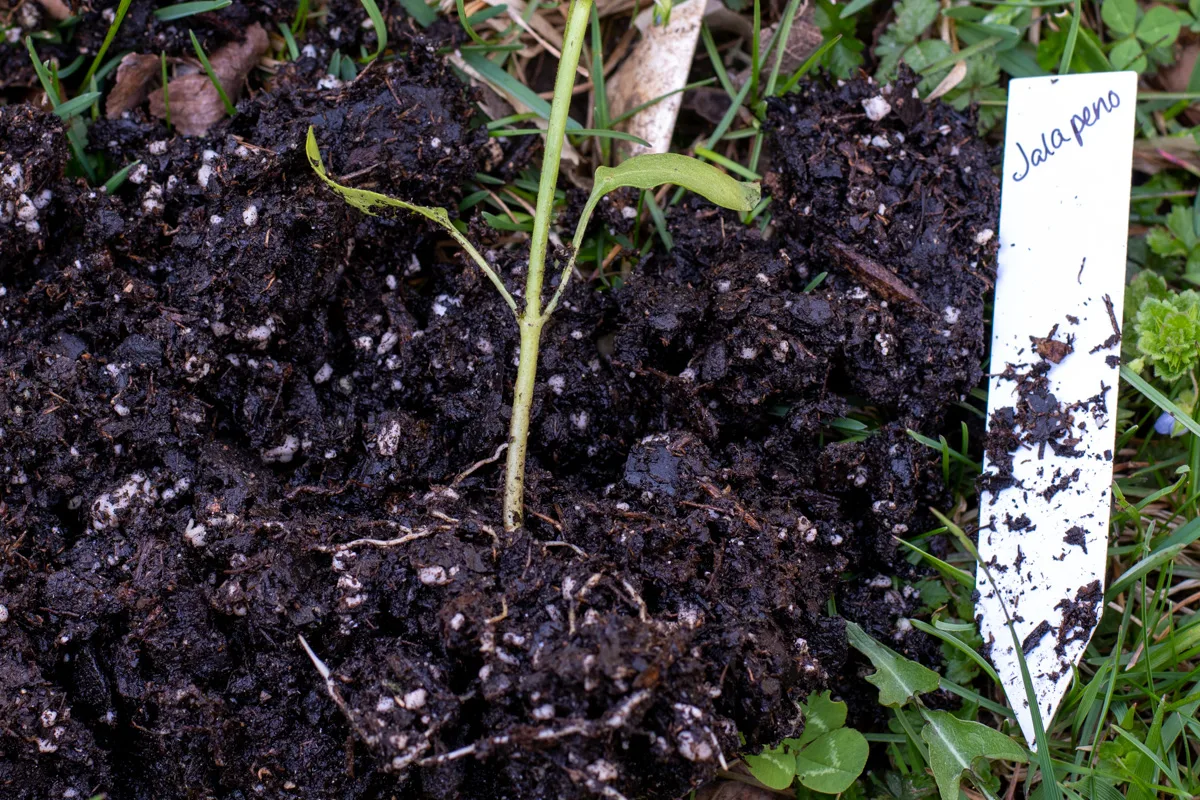
I guess this is the most important question to answer– do pepper plants even benefit from being buried? As I tell my two teenaged-boys all the time, “Just because you can do something doesn’t mean you should.”
But when it comes to burying peppers deeply in the soil, the benefits are there, and it’s worth the extra time and effort to do so.
Wise gardeners know healthy plants above ground come from healthy root systems below ground. If you want enough chilies for your famous hot sauce or enough bell peppers to freeze a peck of stuffed peppers to enjoy all winter long, then large, strong root systems are a must. Because peppers don’t like dry conditions and prefer growing in consistently moist soil, they need a robust root system to keep up with fruit production.
Not to mention, peppers have very specific nutrient needs for fruit production. A large root system makes it more likely for the plant to access those nutrients.
Pepper plants have a root system that typically grows wider rather than deeper. They put down roots between 1-2 feet deep and 2-3 feet wide. By burying the stem a bit deeper at the time of planting, you’re giving your plants a head start on that depth, as the plants will put out adventitious root growth just beneath the soil.
The biggest advantage to burying peppers is overall plant strength.
Unlike tomatoes, peppers grow as a bush. The plant grows from a central stem which must be strong enough to bear the weight of the leaf canopy as well as fruit. Their wide root base is important for anchoring the plant firmly in the ground. By burying your pepper plants, you’re creating a strong foundation for that base to grow.
Starting with a strong plant now means you’re less likely to find broken pepper plants after a windy storm later in the season. Or worse, discovering a plant laden with developing fruit snapped in two lying in the dirt.
How to Bury Pepper Plants
You’ve hardened off your pepper plants, allowing them to pack away energy stores, the soil is a balmy 60 degrees, and you’ve amended the soil where you will be planting your peppers – it’s time to get these plants in the ground.
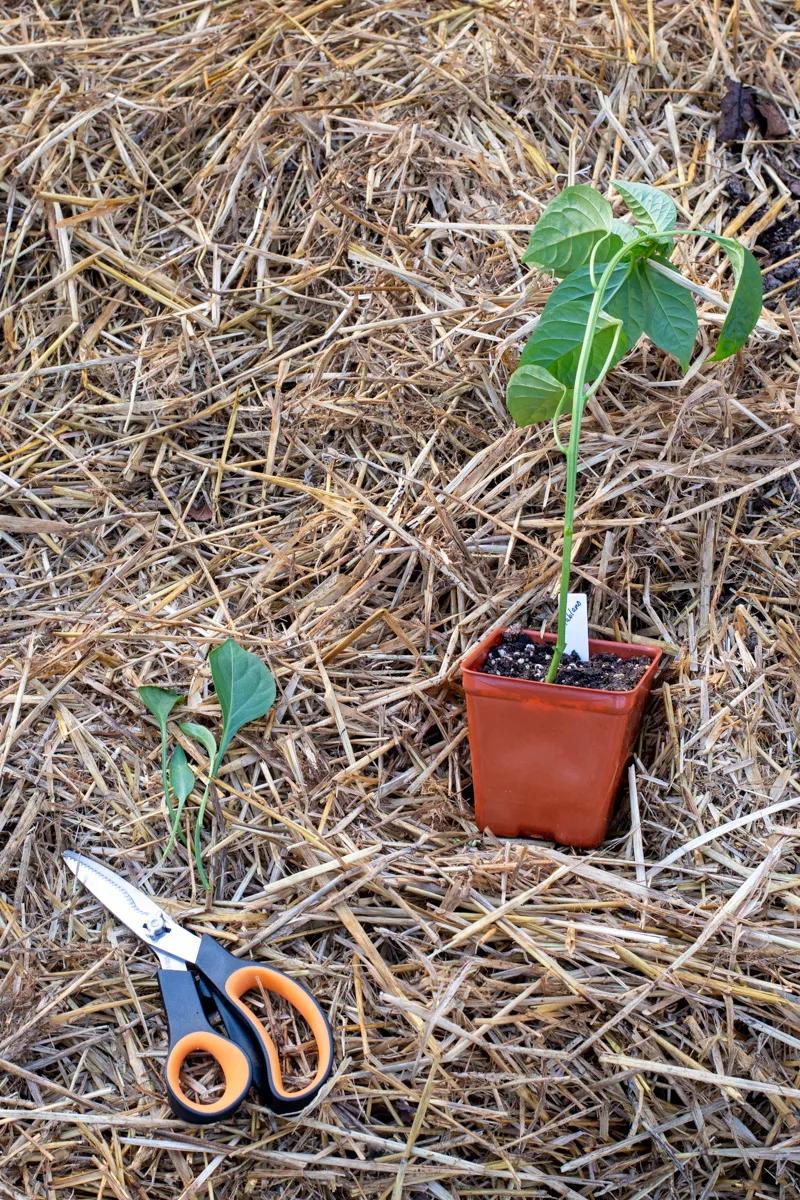
- The day before you intend to plant your peppers, trim off extra stems with sterile scissors, leaving a ¼” nub at the central stem. You don’t want to bury more than 2/3 of your plant, so be sure you’re leaving all leaves and stems above that point. This extra time allows the cuts to scab over before you plant the pepper.
- Dig a hole deep enough to bury half to two-thirds of the stem. I like to put a trowelful of compost in the bottom of the hole and a little blood meal to give my pepper plants the nitrogen boost needed to develop a healthy canopy that will shade fruits from the hot sun later in the season.
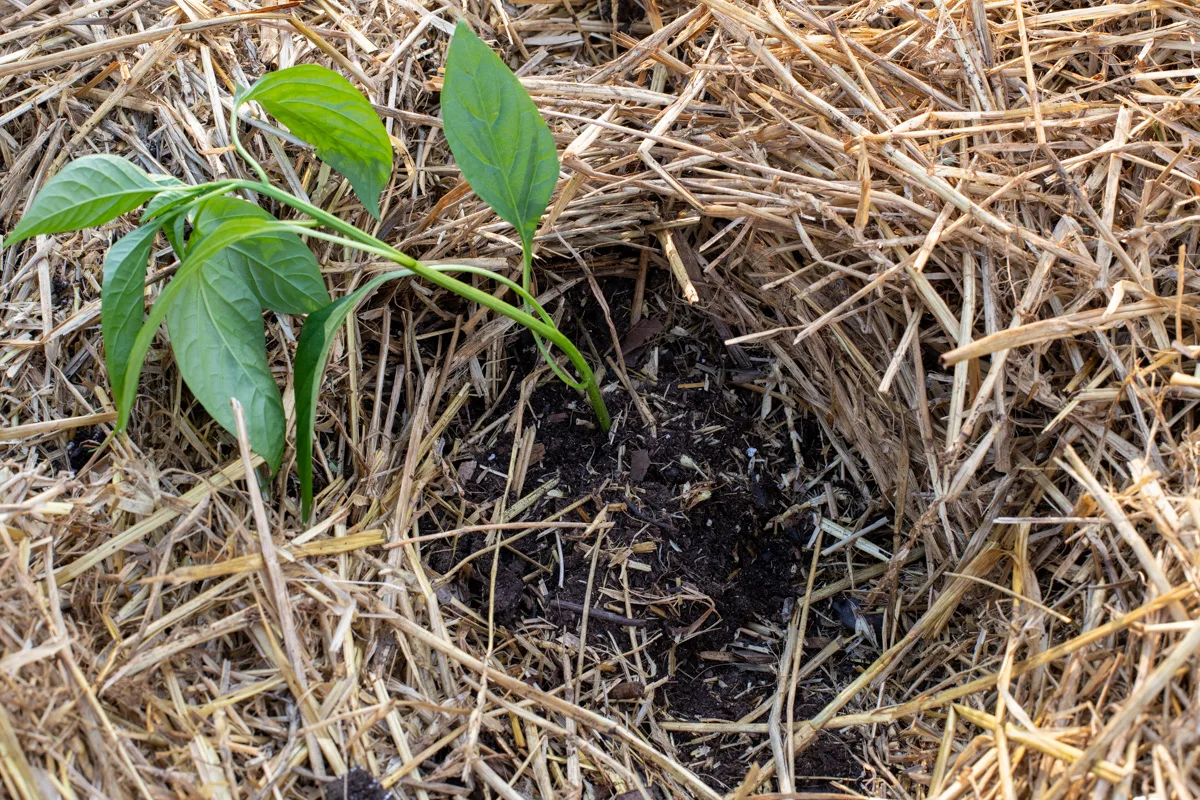
- Place the plant in the hole and firmly pack the soil around the stem. You want to ensure there aren’t air pockets at the base of the root ball (which will cause roots exposed to the air to die off), so press the first few trowels of dirt firmly into the bottom of the hole. Continue to add more dirt, pressing as you go.
- Water in the newly planted pepper, don’t forget a label and mulch around the plants well. Remember, peppers need moist but not soggy soil. Depending on your weather, you may need to water your new transplants daily while they get established and start growing those new adventitious roots.
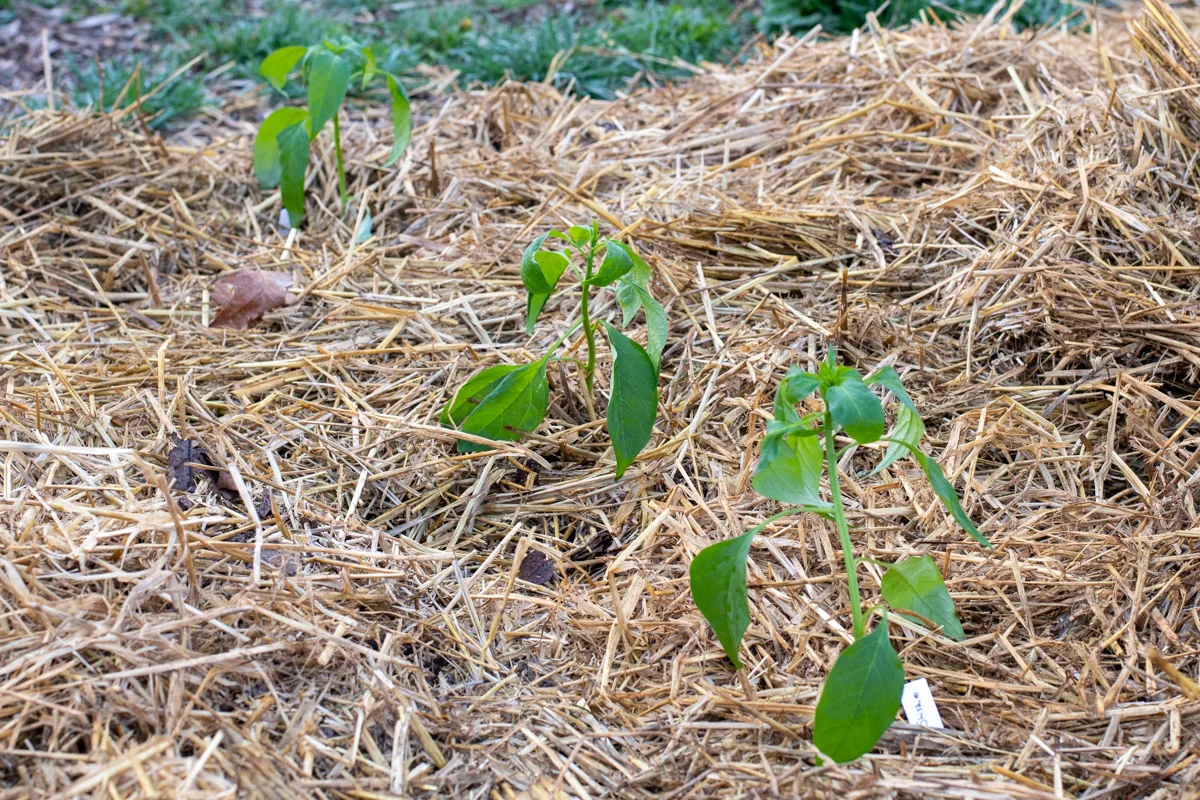
On a final note, I discovered another (unfortunate) benefit to burying pepper plants deeply when you transplant them.
I made the rookie mistake of not checking the extended forecast before planting my peppers this year. While I was planting, we were enjoying 80-degree days and warm nights. But the bottom dropped out the next week, and suddenly we had frost warnings in the evenings.
No problem, I thought. We’ve got plenty of floating row covers; I’ll double them up and cover the peppers.
The next day when I went out to check on the newly planted seedlings, I was devastated to find that the row covers hadn’t been enough. The scene that greeted me was ten weeks of carefully tended seedlings wiped out overnight.
Not going to lie; I teared up looking at my poor dead peppers.
But several days later, as I was walking past what was supposed to be my pepper bed, I noticed something bright green among the wilted, frostbitten plants. Upon closer inspection, I saw that the peppers were putting out new leaves at the base of the stem near the ground.
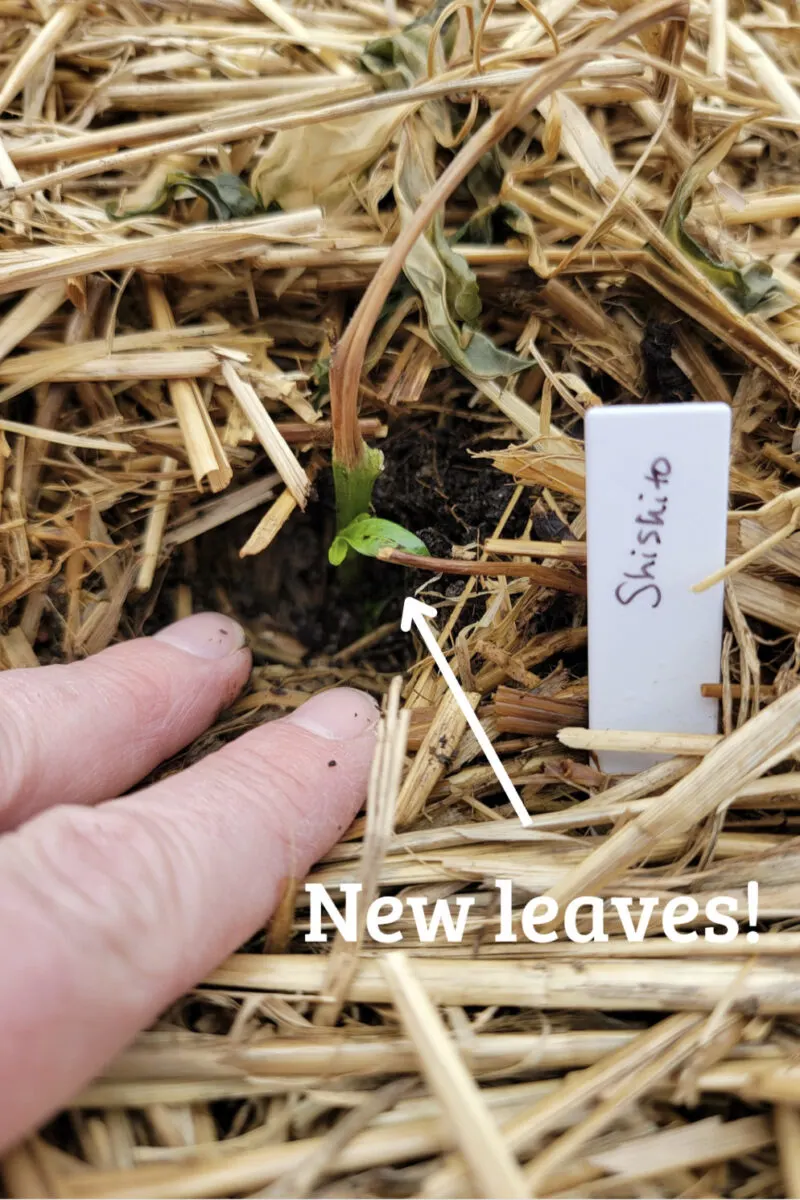
I was shocked!
I realized that because I buried my plants, there was still two-thirds of a live plant underground, which was much warmer than the air temperature. My plants were not only putting out new roots beneath the soil but new stems aboveground.
Had I buried my pepper plants at the same depth as their transplant pots, I have no doubt I would have lost all ten of my peppers.
So, can you bury peppers like you do tomatoes? Yes. And no, this is not the backyard chicken forum.

Get the famous Rural Sprout newsletter delivered to your inbox.
Including Sunday ramblings from our editor, Tracey, as well as “What’s Up Wednesday” our roundup of what’s in season and new article updates and alerts.

